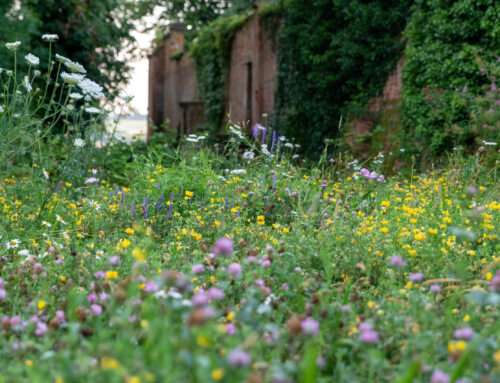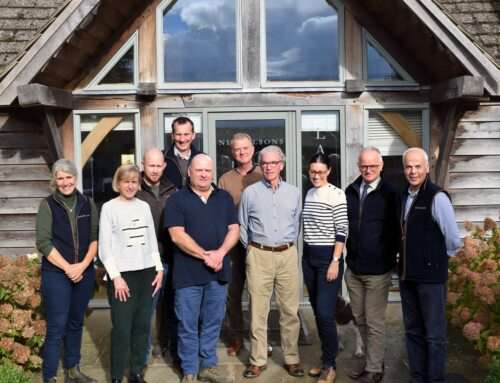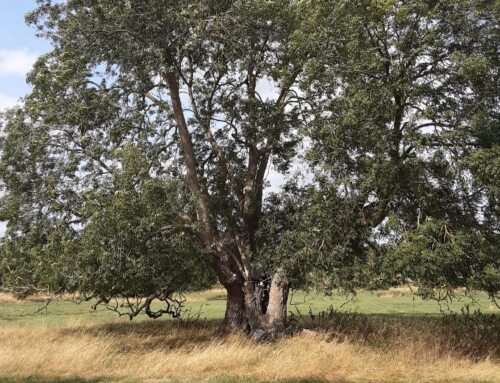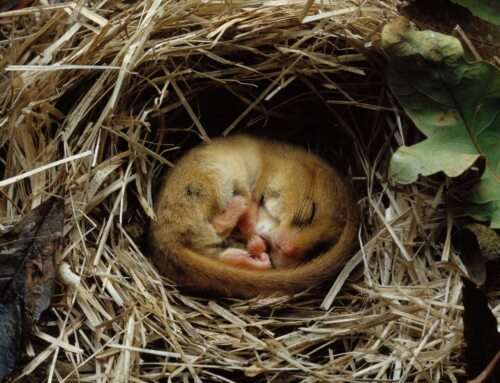Soils – Our Most Precious Resource
Some shocking statistics that might make you reconsider the value of the brown friable substrate I call soil but many people call “muck” or “dirt”.
Across our UK landscape, we would be forgiven for thinking that our carbon stocks are in our trees and hedgerows but in fact 95% of land carbon stocks are held in our soils. If our soils are farmed exhaustively, or our construction sites seal out the air and water from the topsoil, then we are damaging a significantly important resource in the climate equation.
At Nicholsons, we’ve been sharing our knowledge on soil science with the wider industry through the Society of Garden Designers and BALI to raise awareness of this invaluable resource.

By Liz Nicholson, Managing Director
For good design, it should all start with careful analysis of the soil on site. This journey can start at the highest level by looking at geology plans so that you can sort out your horsehay sandstone from your white limestones! This will give a clue as to how the soils were formed, whether they were eroded from bedrock or deposited by glaciers.
The Landis Soilscapes resource will give you an idea of where different soils lie, their texture drainage and fertility.
For example, our head office at North Aston, sits on the Aberford series. 5.11a – Aberford – shallow, brashy, well drained, calcareous, fine, loamy.
Once you have got to know your soils from your desk-based learning, it is crucial to get out into the field and dig a big hole. You will be looking for changes throughout the profile from rich brown topsoil all through the profile to subsoil. You will be looking at friability and whether the soil is in large clods that can’t be broken down. You will be considering whether it has open air porosity which should typically be 15% of the volume and whether it appears to have any organic matter evidenced by roots and brown detritus. A healthy soil should be open and friable in small aggregated clusters.
You might want to squeeze some soil between your fingers and assess if it’s sandy or silty or clay. The clay notably smears on your hands and is difficult to wipe off!


As garden designers, landscape architects and foresters, it is crucial that we understand our soils and we will often carry out a soil analysis by sending away a sample to an accredited laboratory, particularly assessing for phosphates, potassium, magnesium and pH.
When we design our landscapes, we pay particular attention to the topographical survey and try to work with existing levels where we possibly can. Many designers underestimate the carbon cost of soil movements and for fun, I did a quick calculation. If a designer doesn’t take adequate care of levels and sets the level so that soil must be removed by 30 centimetres over 10 square metres only, this would fill a six yard skip and the carbon emissions resulting in the transport are enough to make 1600 cups of tea and so I always tease my design team to go and have another cuppa and really look at your levels and ensure that we are preserving existing landscapes wherever possible.
Preserving existing topsoils has got to be the best outcome and where developers need to strip soils for access to construction sites, it is critical that they are looked after and segregated so that the topsoil can be reused. It takes 1000 years to make 3 centimetres of topsoil.
Sadly, through poor soil handling, much soil ends up compacted and when the rain falls in increasingly heavy events, it simply cannot infiltrate into the soil quickly enough. The resulting runoff can cause extreme erosion. In England and Wales, roughly 2.9 million tonnes of topsoil are eroded annually. If you pay £50 per tonne of topsoil, this equates to a cost of £145,000,000.
I know I am evangelical about tree planting, but it is also reported that established woodland has 60 times greater infiltration than the neighbouring arable field. With the anticipated potential cost of flooding per year by 2080 at £27 billion, it really builds the case for planting trees in well-considered places, to stem the flow… excuse the pun!

We all understand how important soils are as a habitat. In one teaspoon of soil alone, 1 billion bacterial cells, up to 1,000,000 individual fungi and 1,000,000 protist cells…not to mention nematodes, earthworms and moles. U.S. data suggests the ecosystem services delivered by soil runs into the trillions… awesome isn’t it?
So what must we do to ensure that we play our role in preserving this vital asset?
All architects, engineers and designers need to collaborate at project level on insisting and developing soil management plans at the early planning stages and not waiting until excavators are on site. The planning authorities have a role here where they might insist upon soil management plans or issue Soil Protection Orders alongside the regulations for protected species like bats!
As an industry, we need to act responsibly rather than relying on enforcement and with high costs of imported soil and high costs of transport both in terms of money and carbon cost, it would seem wise to spend time at the planning stage to minimise disruption to soils on all construction sites.
In the same way that I have always believed that rainfall is better than irrigation, I believe that gently formed soil over the millennia is infinitely better than man-made imported soil.
We have a gift of nature in soil – we are custodians, let’s look after it.







